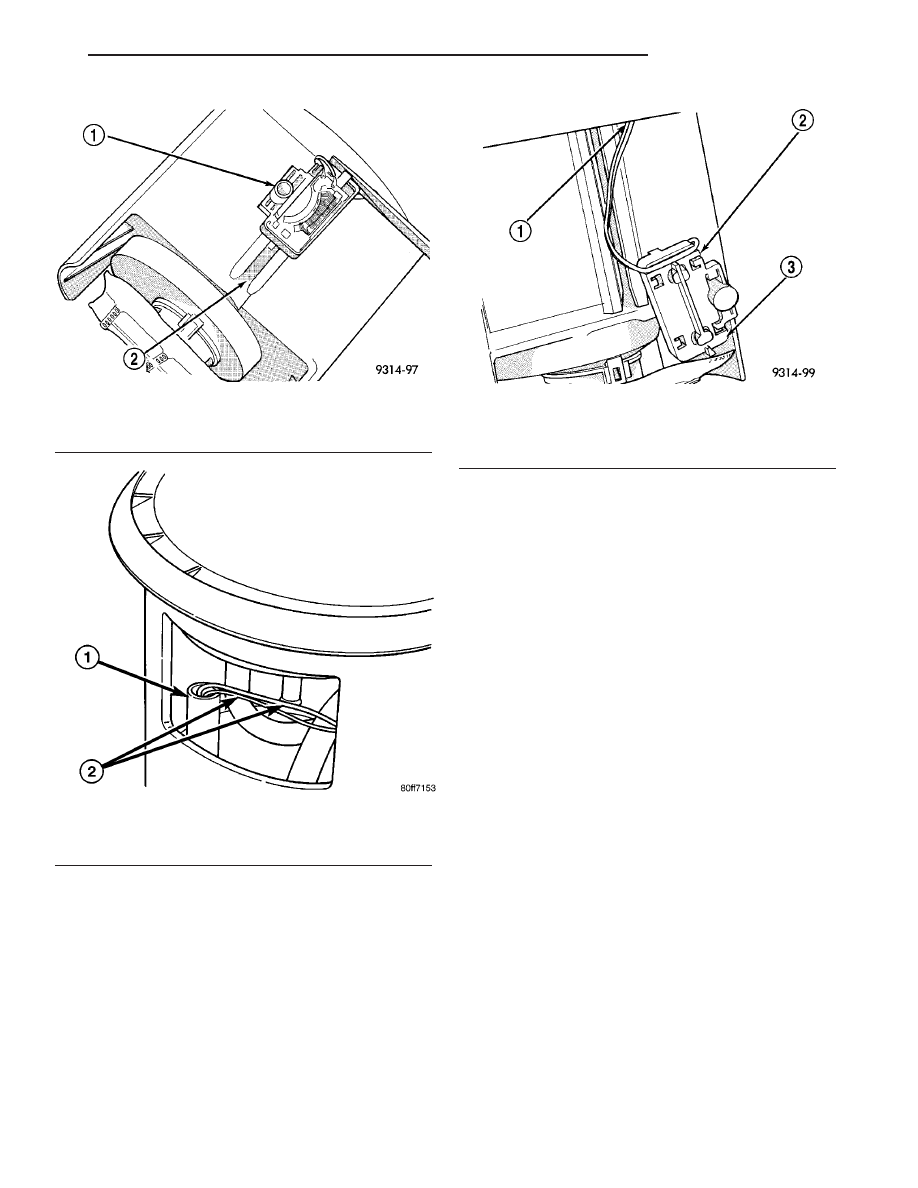Chrysler 300M, Dodge Interpid. Manual - part 269

(2) Wrap wires into groove in back of level sensor
(Fig. 7).
(3) While feeding wires into standpipe, slide level
sensor up into installation channel until it snaps into
place. Ensure tab at bottom of sensor locks in place.
(4) Install level sensor wires in connector. Push
the wires up through the connector and then pull
them down until they lock in place. Ensure signal
and ground wires are installed in the correct position
(Fig. 3).
(5) Install retaining clip on connector.
(6) Push fuel pump/level sensor connector up into
bottom of fuel pump module electrical connector.
(7) Install fuel pump module. Refer to Fuel Pump
Module in this section.
FUEL LINES
DESCRIPTION - FUEL LINES/HOSES AND
CLAMPS
Also refer to Quick-Connect Fittings.
WARNING: THE FUEL SYSTEM IS UNDER A CON-
STANT PRESSURE (EVEN WITH THE ENGINE OFF).
BEFORE SERVICING ANY FUEL SYSTEM HOSES,
FITTINGS OR LINES, THE FUEL SYSTEM PRES-
SURE MUST BE RELEASED. REFER TO THE FUEL
SYSTEM PRESSURE RELEASE PROCEDURE IN
THIS GROUP.
The lines/tubes/hoses used on fuel injected vehicles
are of a special construction. This is due to the
higher fuel pressures and the possibility of contami-
nated fuel in this system. If it is necessary to replace
these lines/tubes/hoses, only those marked EFM/EFI
may be used.
If equipped: The hose clamps used to secure rub-
ber hoses on fuel injected vehicles are of a special
rolled edge construction. This construction is used to
prevent the edge of the clamp from cutting into the
hose. Only these rolled edge type clamps may be
used in this system. All other types of clamps may
cut into the hoses and cause high-pressure fuel leaks.
Use new original equipment type hose clamps.
STANDARD PROCEDURE - HOSES AND CLAMP
Inspect all hose connections (clamps and quick con-
nect fittings) for completeness and leaks. Replace
Fig. 5 Fuel Level Sensor Removal
1 - LEVEL SENSOR
2 - INSTALLATION CHANNEL
Fig. 6 STANDPIPE INSIDE OF MODULE
1 - STANDPIPE
2 - LEVEL SENSOR WIRES
Fig. 7 LEVEL SENSOR
1 - STANDPIPE OPENING
2 - GROOVE
3 - BACK OF LEVEL SENSOR
LH
FUEL DELIVERY
14 - 5
FUEL LEVEL SENDING UNIT / SENSOR (Continued)